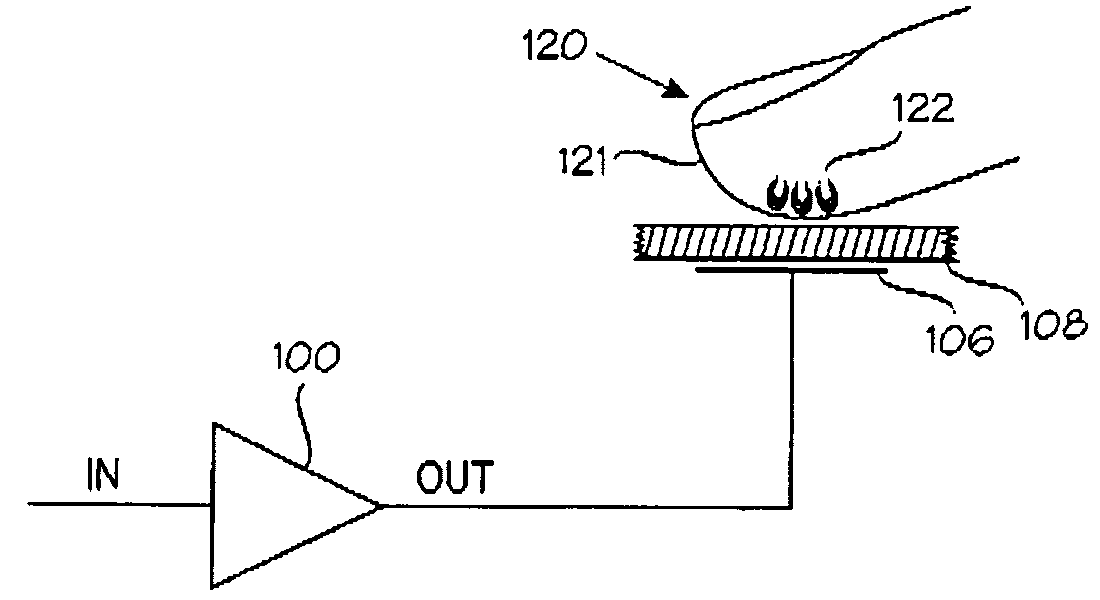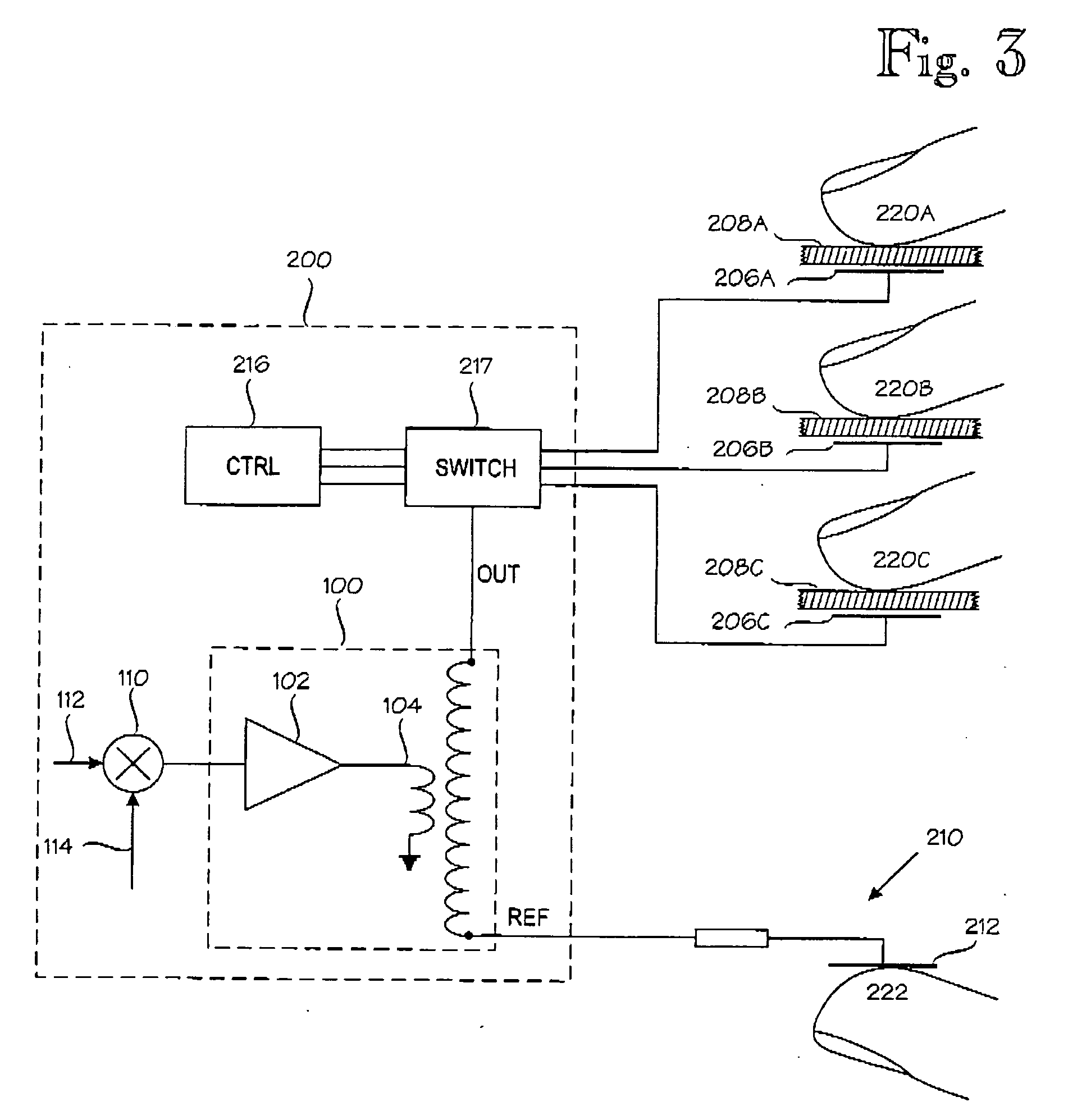Method and apparatus for sensory stimulation
a sensory stimulation and apparatus technology, applied in the direction of transmission, visible signalling system, transmission system, etc., can solve the problems of unreliable, difficult control, bulky moving mechanical components, etc., and achieve the effect of low power consumption
- Summary
- Abstract
- Description
- Claims
- Application Information
AI Technical Summary
Benefits of technology
Problems solved by technology
Method used
Image
Examples
Embodiment Construction
[0046]FIGS. 1 through 15 relate to the operation and implementation of a capacitive electrosensory interface (“CEI”) which can be employed in the inventive touch screen interface.
[0047]FIG. 1 illustrates the operating principle of the CEI. Reference numeral 100 denotes a high-voltage amplifier. The output of the high-voltage amplifier 100, denoted OUT, is coupled to an electrode 106 which is insulated against galvanic contact by an insulator 108 which comprises at least one insulation layer or member. Reference numeral 120 generally denotes a body member to be stimulated, such as a human finger. Human skin, which is denoted by reference numeral 121, is a relatively good insulator when dry, but the CEI provides a relatively good capacitive coupling between the electrode 106 and the body member 120. The capacitive coupling is virtually independent from skin conditions, such as moisture. The inventors' hypothesis is that the capacitive coupling between the electrode 106 and the body me...
PUM
 Login to View More
Login to View More Abstract
Description
Claims
Application Information
 Login to View More
Login to View More - R&D
- Intellectual Property
- Life Sciences
- Materials
- Tech Scout
- Unparalleled Data Quality
- Higher Quality Content
- 60% Fewer Hallucinations
Browse by: Latest US Patents, China's latest patents, Technical Efficacy Thesaurus, Application Domain, Technology Topic, Popular Technical Reports.
© 2025 PatSnap. All rights reserved.Legal|Privacy policy|Modern Slavery Act Transparency Statement|Sitemap|About US| Contact US: help@patsnap.com



